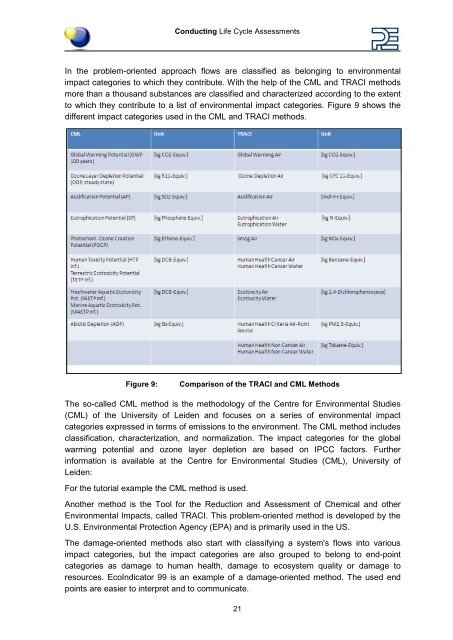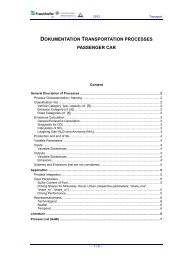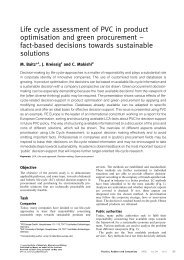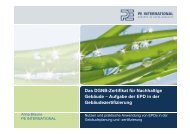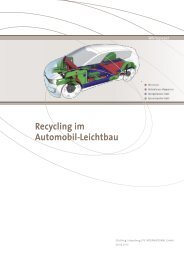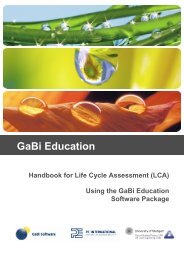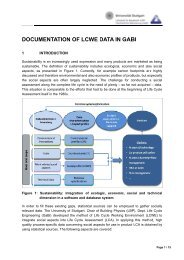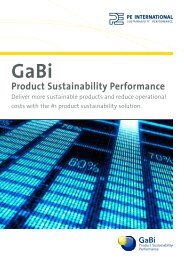Paper_Clip_Tutorial Part1.pdf - GaBi Software
Paper_Clip_Tutorial Part1.pdf - GaBi Software
Paper_Clip_Tutorial Part1.pdf - GaBi Software
Create successful ePaper yourself
Turn your PDF publications into a flip-book with our unique Google optimized e-Paper software.
Conducting Life Cycle Assessments<br />
In the problem-oriented approach flows are classified as belonging to environmental<br />
impact categories to which they contribute. With the help of the CML and TRACI methods<br />
more than a thousand substances are classified and characterized according to the extent<br />
to which they contribute to a list of environmental impact categories. Figure 9 shows the<br />
different impact categories used in the CML and TRACI methods.<br />
Figure 9: Comparison of the TRACI and CML Methods<br />
The so-called CML method is the methodology of the Centre for Environmental Studies<br />
(CML) of the University of Leiden and focuses on a series of environmental impact<br />
categories expressed in terms of emissions to the environment. The CML method includes<br />
classification, characterization, and normalization. The impact categories for the global<br />
warming potential and ozone layer depletion are based on IPCC factors. Further<br />
information is available at the Centre for Environmental Studies (CML), University of<br />
Leiden:<br />
For the tutorial example the CML method is used.<br />
Another method is the Tool for the Reduction and Assessment of Chemical and other<br />
Environmental Impacts, called TRACI. This problem-oriented method is developed by the<br />
U.S. Environmental Protection Agency (EPA) and is primarily used in the US.<br />
The damage-oriented methods also start with classifying a system's flows into various<br />
impact categories, but the impact categories are also grouped to belong to end-point<br />
categories as damage to human health, damage to ecosystem quality or damage to<br />
resources. EcoIndicator 99 is an example of a damage-oriented method. The used end<br />
points are easier to interpret and to communicate.<br />
21


